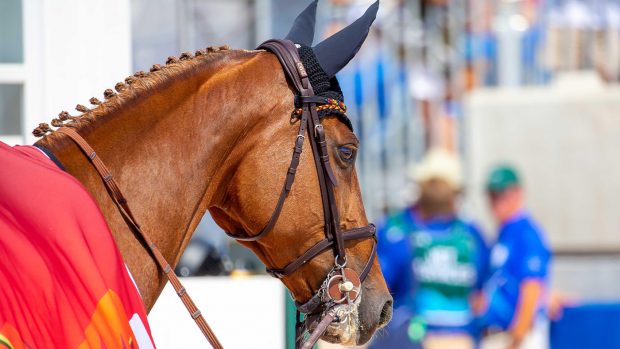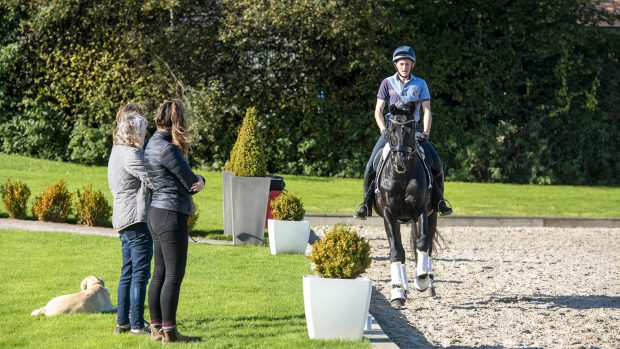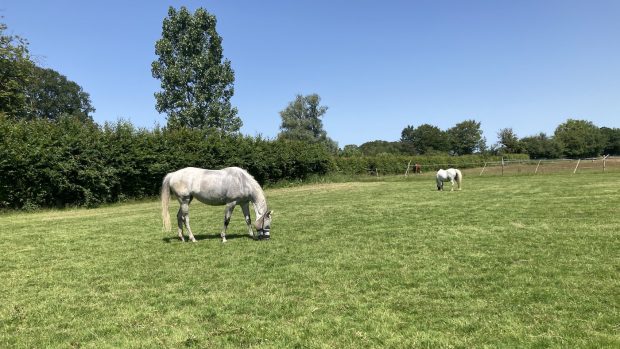Q. My vet has just diagnosed my horse as being a ‘roarer’. What does this mean and what may have caused it?
Vet Jo Holmes replies: Recurrent Laryngeal Neuropathy (RLN) describes the paralysis of the recurrent laryngeal nerve, which normally innervates – stimulates – part of the larynx.
Two cartilages within the larynx must move to the sides of the organ each time a horse takes a breath. If they fail to move apart – because the recurrent laryngeal nerve is paralysed – or even if they move across only partially, the airway is compromised and the horse cannot inhale enough oxygen.
In top-level competition horses this results in a loss of performance, although pleasure horses can usually cope at lower levels of work.
You may hear an inspiratory noise when you work your horse hard: this is the sound of turbulent air within the larynx and the horse is thus known as a roarer.
RLN generally seems to affect large, Thoroughbred youngsters up to the age of eight. It is usually the left side of the larynx that is paralysed. This may be due to the fact that the left recurrent laryngeal nerve is longer than the right one, but exactly why the nerve degenerates is not known.
On endoscopic examination, your vet will probably observe that the two cartilages in the larynx move differently as they cover the top of the trachea (this happens during swallowing to prevent food falling down the trachea).
Closure occurs when the larynx is at rest, but it requires innervation to the muscles around the larynx to open. If the left nerve isn’t functioning, the larynx will not open fully.
Varying degrees of paralysis may be observed, which help vets monitor progression of the problem: Grade 1 describes a minimal dysfunction, while Grade 5 defines complete paralysis.
Surgery can help to correct the problem. While it may never provide the maximal oxygen intake required by a racehorse, most other types of competition horse, for example, eventers, can cope thereafter.
The ‘tie back’ operation literally ties the inert cartilage into a position that allows an adequate airway without causing the horse to inhale all its food. Ventricles within the larynx are also removed at the same time to increase air capacity inside the organs.
Unfortunately, recovery from surgery usually takes 4-5 months, so if your vet has recommended this course of action for your horse, be prepared to rest him for some months.



